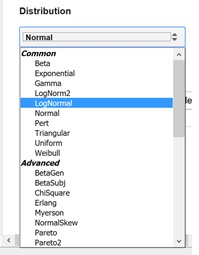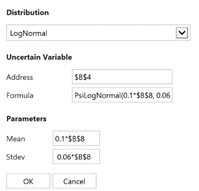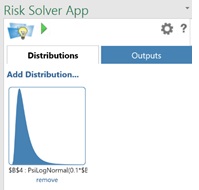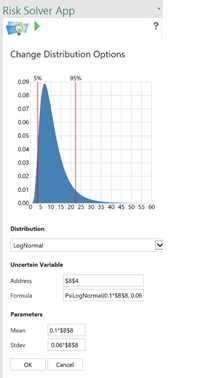The uncertain quantity in this model is the number of no-shows; hence we should model this with an uncertain variable. We quickly realize that the number of no-shows will depend on the number of tickets sold. After some research, we decide that we can use a LogNormal distribution for the number of no-shows. To add the distribution, click cell B4 and the 'Add Distribution...' link on the Distributions tab.
If you are following along with the example, the distribution has already been added for you, but you can click the LogNormal() distribution on the Distributions tab to open and view all options explained below.

This will bring you to the distribution configuration page, where you can select the appropriate distribution and parameters relevant to your simulation.
Click the down arrow under Distributions to display a gallery of distributions. Select the LogNormal distribution.

This distribution uses two parameters, Mean and Standard Deviation. Since we expect the mean to hover around 10% of the number of tickets sold, we can calculate the mean as B8/10 with a standard deviation equal to 6% of the number of tickets sold or, 0.06 * B8. Enter both formulas into the appropriate field, then click OK.

A frequency chart of the distribution appears on the Distributions tab. To edit this distribution, single click the chart.

A graph of the distribution is displayed with the 5% and 95% percentiles delineated.

Click OK to return to the Distribution tab.
